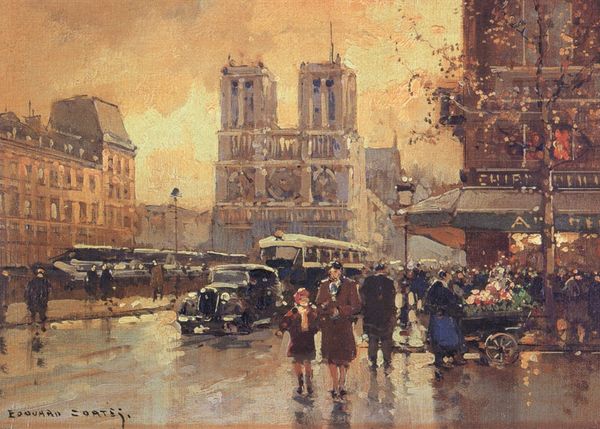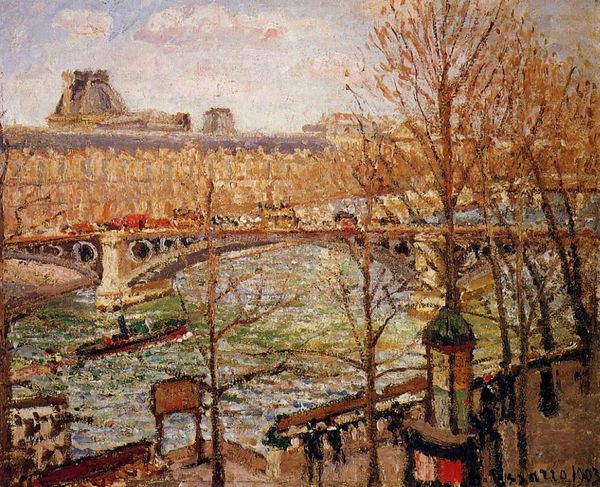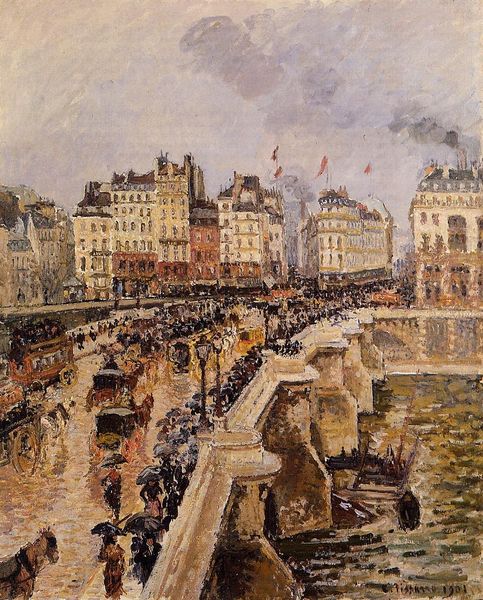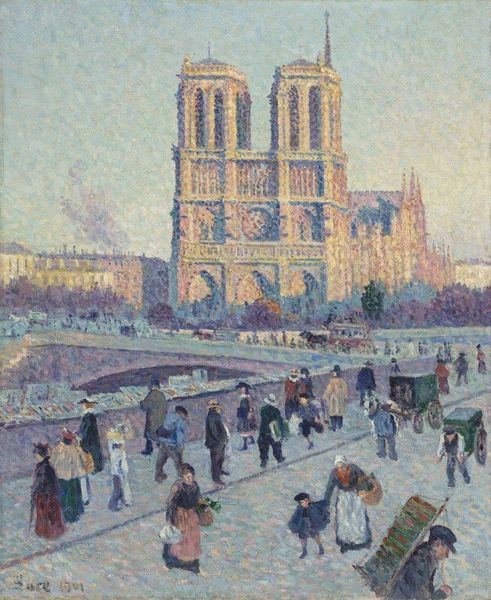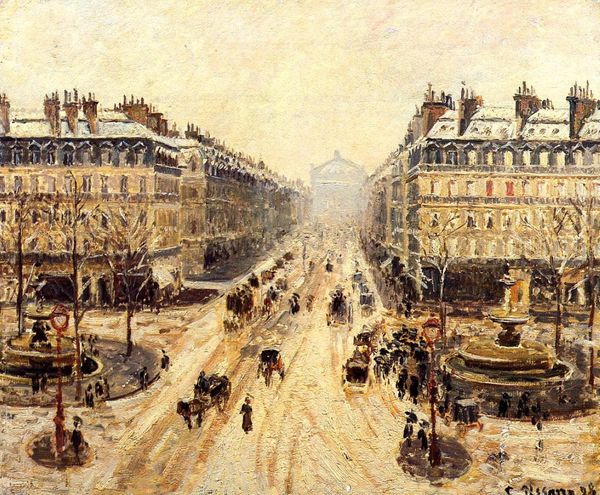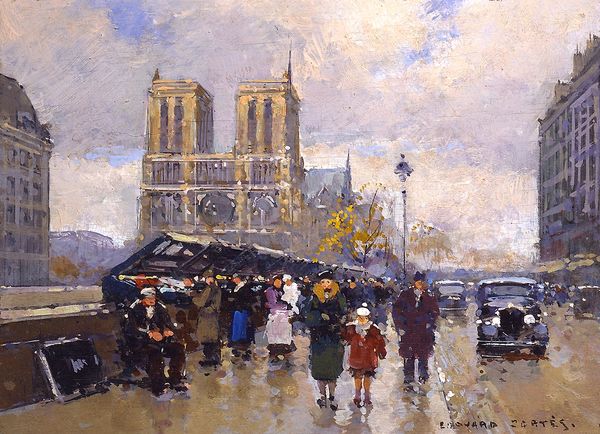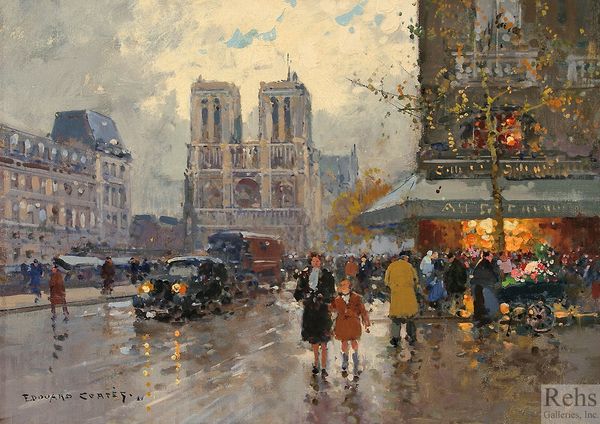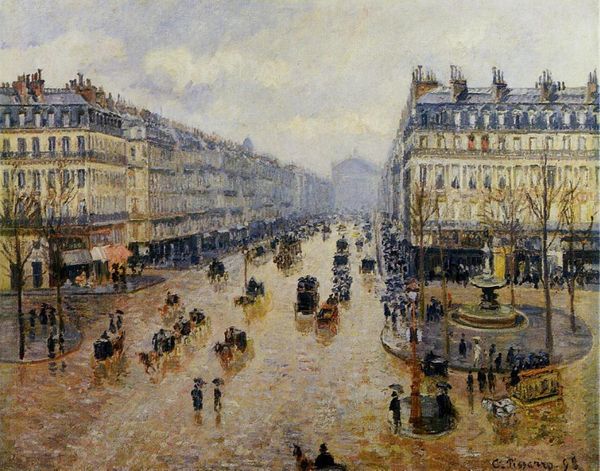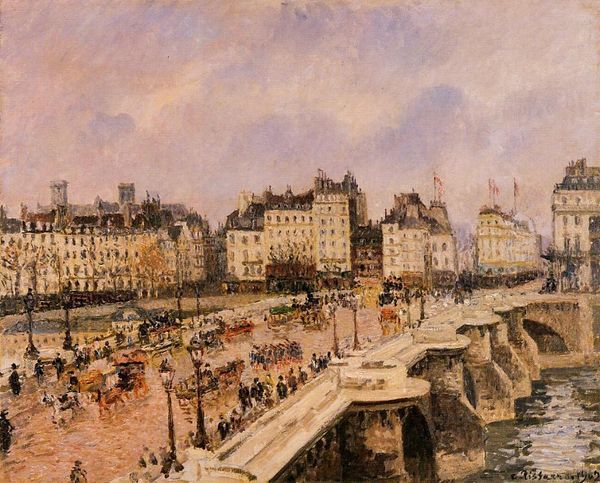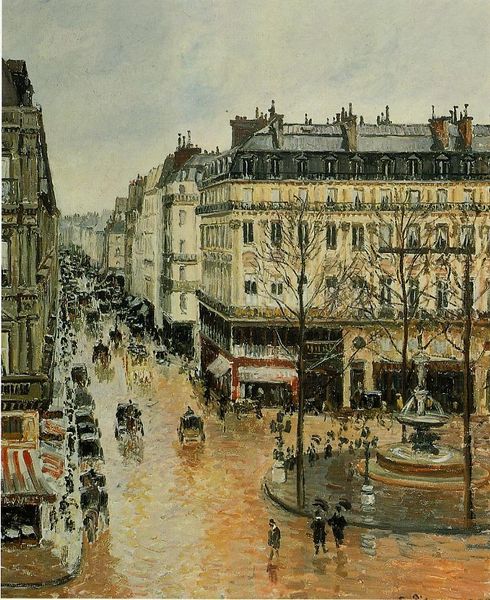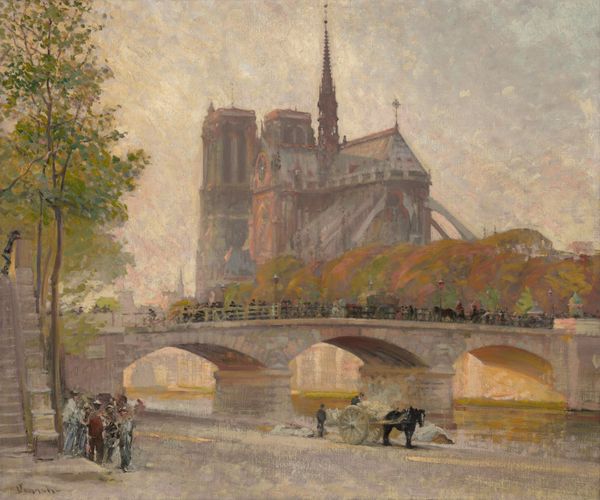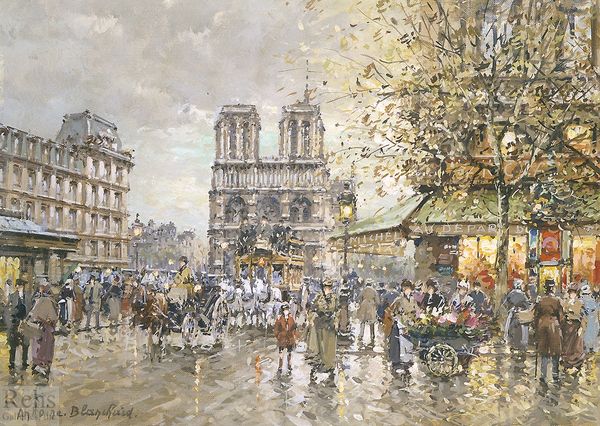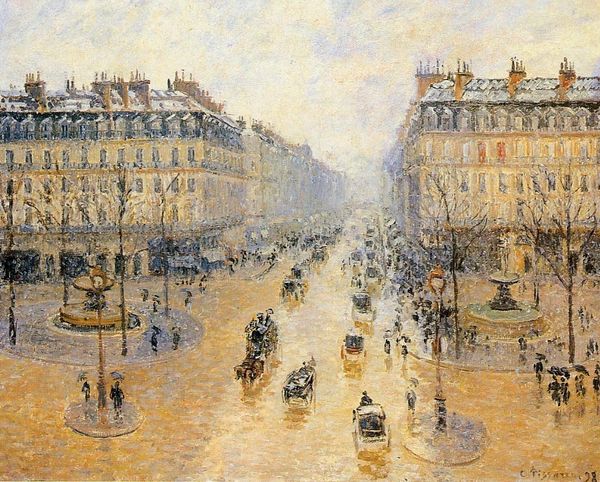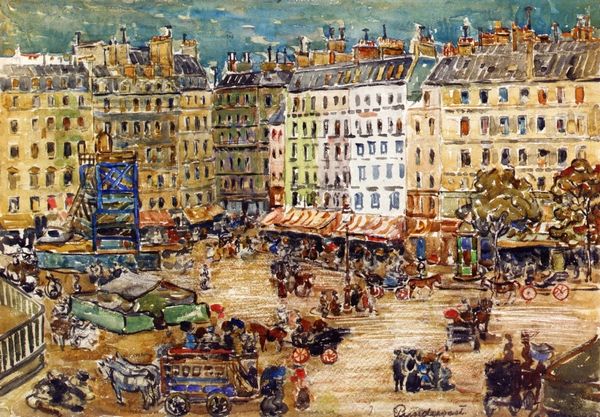
Copyright: Public domain
Maurice Prendergast painted "Notre Dame" using watercolor, likely in the late 19th or early 20th century. He was an American artist deeply influenced by European modernism, particularly the Impressionists and Post-Impressionists. Prendergast captures the iconic cathedral, but more importantly, he focuses on the vibrant public life unfolding around it. The image is filled with figures, each rendered with quick, loose brushstrokes. Consider the period: Paris was a center of social change, artistic innovation, and bustling city life. Prendergast reflects this, showing the cathedral not just as a religious monument but as a backdrop to modern urban experience. His work aligns with the progressive artistic movements that questioned traditional academic art. To fully appreciate Prendergast, we must consider the institutions and social forces that shaped his work. Historians delve into exhibition records, period writings, and cultural histories to understand the dynamic world that Prendergast both witnessed and shaped. Ultimately, art is a product of its time, its meaning contingent upon the social and institutional context in which it was created and received.
Comments
No comments
Be the first to comment and join the conversation on the ultimate creative platform.
